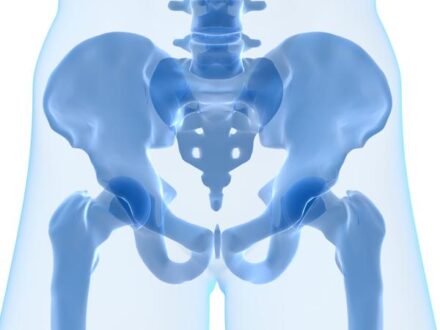Learn all about the phleboliths symptoms, causes and complications. A phleboliths is a small local, usually rounded, calcification within a vein. These are very common in the veins of the lower part of the pelvis, and they are generally of no clinical importance. When located in the pelvis they are sometimes difficult to differentiate from kidney stones in the ureters on X-ray. A calculus in a vein usually results from the calcification of an old thrombus.
Phleboliths in the pelvic region are present in about 44.2% of people and are more common in females (50.1%) than males (37.3%). The amount of phleboliths increases with age and they also appear more often on the left than on the right side of the pelvic region. Phleboliths outside the pelvic region appear in about 2% of the population.
The person suffering from Phleboliths will experience symptoms of pain in the abdominal and pelvic area. This pain may not be the intense pain seen with renal stones but usually is mild to moderate. Another symptom for Phleboliths is the presence of thrombosis. The presence of Phleboliths also tends to cause the pelvic veins to dilate and cause a varicose vein like situation which might also cause pain in the pelvis and Bladder discomfort etc.
Causes of the formation of pelvic phleboliths are not clear. Generally, they form due to some type of trauma to the vein wall. Women tend to get them more than men do because they have more veins in the pelvic region. Phleboliths can be a sign of venous hypertension, so it’s important to check your blood pressure if phleboliths are found. In most instances, there is no reason to remove phleboliths. However, any growth in your body can lead to inflammation, infection and possibly pain.
Treatment for phleboliths is actually rather easy. A warm washcloth applied to the problem area help greatly. The affected area should also be elevated above the heart whenever possible. That way, less blood is forced through this area. Also, when you visit the doctor, you will also most likely be prescribed anti-inflammation medications which are important in treating this condition.
What is Phleboliths
A phlebolith, also known as a phlebolite, is a “stone” or calcification (a body formed out of calcium) that develops within the wall of a vein. Phleboliths are masses, clots or growths that develop in the wall of a vein and are composed of calcium or lime. They are stationary and harmless but can indicate the presence of more dangerous conditions or diseases. Common in the pelvic area, phleboliths can also develop in the esophagus, kidney, stomach and intestines. Most adults have phleboliths and are unaffected by them.
Phleboliths Symptoms
Most of the time you will not even know that you have phleboliths but there are times when symptoms manifest in some way, which can include:
- Pain in the abdomen, lower back, or pelvis area and is similar to kidney stone pain
- Thrombosis, which can cause your blood to slow down
- Varicose conditions in the veins in your pelvic region
- Warmth at the site
- Swelling and redness may occur
Phleboliths Causes
There are many different reasons that a person can develop phleboliths, which include:
- Varicose veins
- Pressure in the veins and injuries to the vein walls can cause urinary phleboliths
- Liver disease can cause lack of blood flow resulting in the formation of phleboliths in the veins of your intestines, stomach, and other organs in your abdominal cavity
- Bowel movements caused by straining can increase the pressure within the tubes and veins of your abdominal organs
- Diverticular disease can cause overworked and extra stress on the muscles lead to increased pressure in the tubes of your colon and can lead to the development of phleboliths
- Long car rides
- Airplane flights
- Sitting a lot
- Phleboliths Treatment
Phleboliths treatment may include the followings;
- Sclerotherapy this procedure is performed by inserting a needle into the affected vein and injecting a type of radioactive dye referred to as a sclerosant. This will effectively shrink the vein. Sclerotherapy will occasionally need to be repeated to close the vein permanently.
- Endovenous Laser Therapy also works to remove phleboliths. A tiny laser fiber inserted into the affected vein delivers energy, closing the vein. It is minimally invasive and takes about an hour.
- Surgical excision is more invasive and rarely deemed necessary, but it is performed if other methods fail. For this treatment option, a surgeon will remove the vein and surrounding tissue.
Phleboliths Complications
Phleboliths are a rare vascular, or cardiovascular, complication. As calcifications that develop within the veins, phleboliths can lead to significant life affecting health complications, including death. In most cases, these calcifications along the veins are first ide Therefore, if you have been confirmed with the presence of phleboliths within the breast tissue, ask your physician about the necessary diagnostic studies to determine if they are also present in the pelvic region. With CT scan and ultrasound, the presence of calcifications within the veins can be quickly diagnosed with diagnostic studies and treatment can be determined rather quickly as wellntified in the pelvic region but for some women, the complication may develop in the breast tissue.
 Health & Care Information
Health & Care Information 


